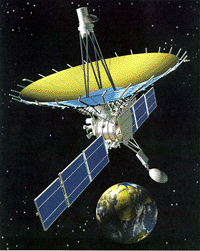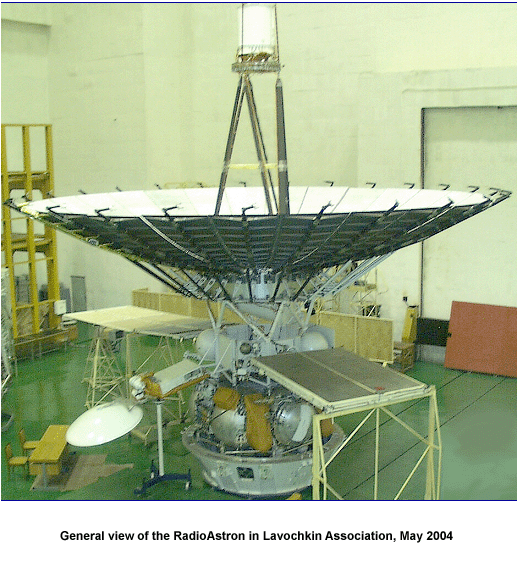According to telemetry data obtained in Lavochkin R&D, the scheduled operations are carried out in full scope.

Spectrum-R, developed under Radioastron project in the framework of Russian Federal Space Program, is intended to study the Universe. The aim of the mission is to use the space telescope to conduct interferometer observations in conjunction with the global ground radio telescope network in order to obtain images, coordinates, motions and evolution of angular structure of different radio emitting objects in the Universe. Scientists also expect to obtain more information about pulsars and interstellar plasma, black holes and neutron stars in the Milky Way. The spacecraft's operational lifetime will be no less than five years.

The Scientific Program of the RadioAstron Observatory
• Galactic nuclei (supermassive black holes, event horizon,
particles acceleration, ultimate brightness temperatures, Faraday
rotation, magnetic fields, cosmic rays, superluminal motion).
• Cosmology effects; redshift dependence of various physical
parameters of galactic nuclei; dark matter and dark energy
effects.
• Star and planetary systems formation, masers and Megamasers.
• Stellar mass black holes and neutron stars.
• Interstellar and interplanetary media.
• Fundamental astrometry and development of the high precision
celestial coordinate frame.
• Development of the high precision model of the Earth
gravitational field.
Spectrum-R was built by Roscosmos’ company Lavochkin R&D. Scientific payloads were developed by the Astro Space Center of Russian Academy of Sciences’ Lebedev Physical Institute, as well as by international partners.
source: Roscosmos
No comments:
Post a Comment